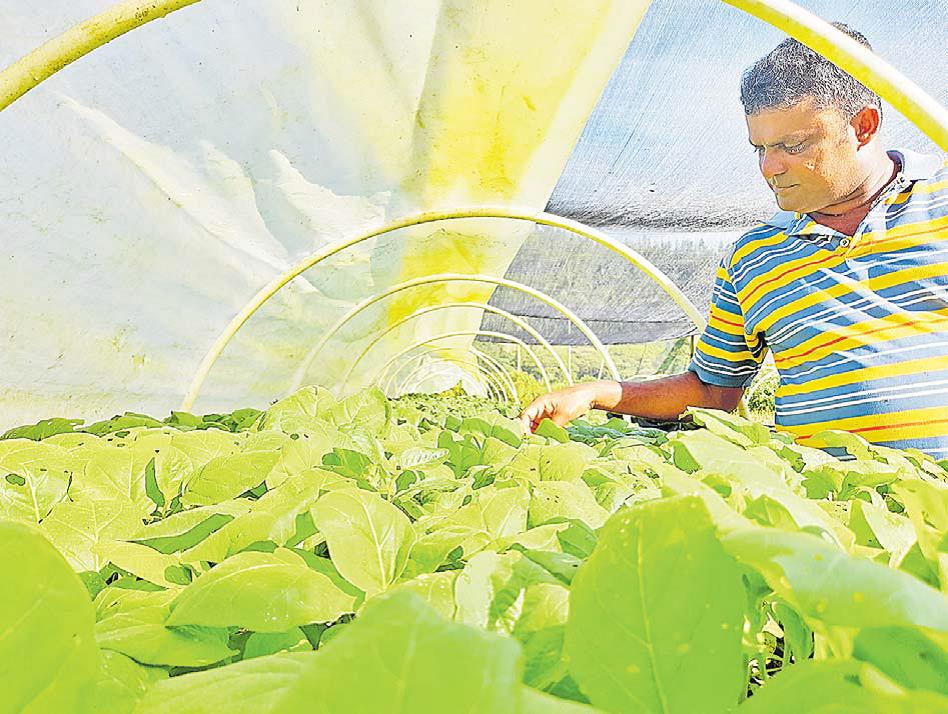As we mark the International Day of Plant Health on May 12, we are reminded of the need to have sustainable plant health systems to address current and emerging threats to biodiversity, food security and trade.
Invasive species pose a major threat to the global economy and the environment, costing billions of dollars to control each year.
With increasing trade, and movement of people globally, opportunities for plant pests and diseases to move around the world have increased dramatically.
This has allowed new pests and diseases to appear in territories where they had never been found, with negative consequences on local ecosystems, agriculture, and food security.
According to FAO, pests and diseases are responsible for losses of between 20 per cent and 40 per cent of global food production and for trade losses in agricultural products exceeding $US220 billion ($F484b) every year.
In the Pacific, we remember the taro leaf blight which devastated the taro industry in American Samoa and Samoa in the early 1990’s.
The Asian Development Bank estimated that Samoa lost an export industry worth $US10 million ($F22m) over a six-month period because of the spread of the disease.
These events increase the vulnerability of our Pacific farmers, and with communities now grappling with often devastating effects of climate change, we must ensure that we address them with solutions that are replicable and resilient without moving toward the use of harmful pesticides and chemicals.
SPC’s Land Resources Division (LRD) has been working closely with the Australian Centre for International Agricultural Research (ACIAR), the University of Queensland, PestNet and the governments of Papua New Guinea, Tonga, Samoa, Fiji, and the Solomon Islands in coming up with less harmful solution of integrated pest management through introduction of the Plant Health Clinic (PHC) concept. Through this concept, farmers take sick plants to plant health doctors for diagnosis and a recommended treatment.
The first Plant Health Clinic (PHC) training in Fiji was carried out at Sigatoka Research Station in 2016 by Plant Health veteran Dr Grahame Jackson under the project Responding to emerging pest and disease threats to horticulture in the Pacific Islands funded by the Australian Centre for International Agricultural Research (ACIAR).
Since then, a total 16 plant health trainings have been carried out by the SPC LRD plant protection team for Fijian farmers and agriculture workers, with more than 250 extension officers trained, 30 plant health clinics conducted, and more than 600 Fijian farmers benefiting from this service.
In addition, about 20 regional and in-country trainings were carried out by the SPC Plant Health team with 40 participants trained online using the Centre for Agriculture and Bioscience International (CABI)courses, after COVID-19 struck.
The plant health team has also identified the potential for digital tools as the way forward to making information readily available and accessible to all stakeholders, particularly extension advisory service staff and farmers, to help minimise potential crop losses.
The digital tools include a plant health factsheet app that has 504 different factsheets containing information on plant disease symptoms and diagnosis. The app currently has over a thousand daily visits on average, with over 10,000 downloads.
An additional digital step forward includes the development of plant doctor networks on WhatsApp and Messenger in member countries that links frontline workers and farmers to experts and the Fiji Ministry of Agriculture officially launching their Plant Doctor Network in 2019.
SPC also has in its disposal a first of its kind, plant health laboratory classified at Biosecurity Containment Level 3 based at its Narere Campus.
The lab, through its Level 3 designation, will allow Pacific Island countries to develop controls for emerging biosecurity threats, including pests and diseases.
In addition to its research function, the plant health lab will provide for regional importation, hosting and containment of a wider range of biological agents (including natural pests and fungus) into Fiji, where they are housed and cultured and eventually distributed to the other Pacific Island countries without any risk to Fiji’s flora and fauna.
To date, there are about five plant health clinics per member country annually, and numbers are expected to increase in future.
An SPC database has been built for all clinic activities carried out in member countries.
The database includes a compilation of the online PHC training packages from resources that were developed by current and related projects to support capacity building activities around the region.
However, there is always room for improvement. First, more plant health champions need to be identified to help promote this important work.
The wheel needs to keep turning so that further grassroots outreach can impact food and nutrition security in the Pacific.
Second, PHCs need to be integrated into existing agriculture ministry activities, rather than operating remotely, to be sustainable and the “plant doctor” training programs should be a formal process whereby plant health licenses need to be earned and renewed annually to guarantee information shared with farmers is relevant and of high quality.
The theme of this year’s International Day of Plant Health is Protecting Plants, Protecting Life.
In the Pacific, with scarce land and the burgeoning threats of climate change and pests and diseases, it is essential that we protect this critical resource that makes up 98 per cent of the oxygen that we breathe and 80 per cent of the food we eat.
Plant health information, through the SPC clinics, must grow even further if we are assume a thriving region with nutrition and livelihood security for many more plant health days to come.
- FERETI ATUMURIRAVA is a SPC Pest and Disease Management adviser. The views expressed are those of the author’s and do not reflect the
views of this newspaper.




